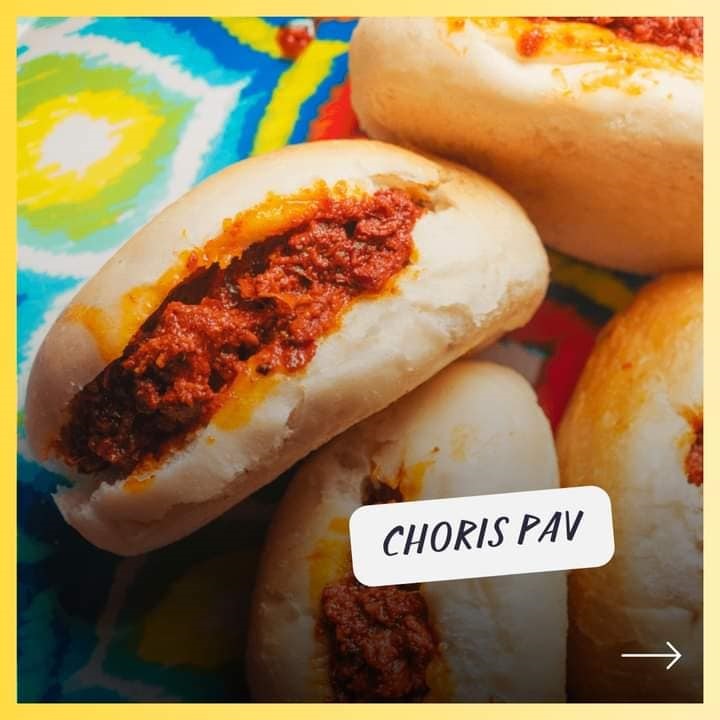
The feast of St Francis Xavier aka ‘Goencho Saib’ on December 3, and the extended exposition from November 21 to January, 5, 2025 will feel incomplete without enjoying a choris-pao in the ‘festachi feri’ that stretches as far as the eye can see. The Goan pork sausage is unique, whether it is a gut filled with spicy meat like the Spanish chorizo (that have found their way even to Australia) or the Agasaim special lingisam, that are constricted every few inches by a thread tied around the gut to look like magnified rosary-beads. There is a choice of bread ranging from pao, whether rectangular ‘formacho pao’ or dumb-bell shaped ‘katri pao’, the round, hard-crusted ‘undo’ or the whole wheat and bran ‘poyee’. The quality of the choris is central to the gourmet delight!
The pork sausage that we know as choris has become an integral part of Goan catholic cuisine. If choris-pao is our original take-away and fast-food before hotdogs, burgers and pizzas or even cutlet-pao came along, it does have slow-food options like choris-pulao, chilli-fry and stew. During my days in the University of Agricultural Sciences in Bengaluru, we found a Goan selling choris on Brigade Road just after the Residency road intersection, and it was easy to barbeque it on Sunday nights when the food in the hostel was just rice and rasam with a little pickle. It was almost like a G I Joe’s survival kit. Now, the Goan choris is a candidate for a different kind of GI: Geographical Indications. The G I cell of the Goa State Council for Science and Technology, Porvorim, is at an advanced stage for its registration. Fellow agriculture graduate, Deepak Parab, is leading the process.
Dr Solomon Rajkumar, scientist - animal sciences (meat technology) at the ICAR-Central Coastal Agriculture Research Institute at Old Goa has recently completed his PhD on the Goan choris and its benefits as a food and a pro-biotic. Its ingredients, including the kind of meat, chilies and other spices, coconut toddy vinegar and the process of sun-drying and wood fire smoking have been documented from various traditional choris makers. Efforts are on to make all of them FSSAI compliant and to register an association that will manage the GI and ensure conformity with the agreed standards. The Goa Feni Distillers and Bottlers Association has led the way to establishing a Conformity Assessment Board (CAB) for ‘cashew feni’, the very first GI obtained in favour of Goa way back in 2007. The khajem, bebinca and choris could possibly have a common CAB for food products, while there could be another CAB for fruits, vegetables and spices like Mankurad mango, Mydoli banana, Agassaim brinjal, Khola and Harmal chilies that already have registered GI for Goa.
We have already noted last month that Dr E B Chakurkar, now director of ICAR-Islands Research Institute in the Andamans; Dr Amiya Ranjan Sahu, scientist - animal genetics and breeding; and Dr Gokuldas P P, senior scientist - animal reproduction and gynecology, (all scientists at ICAR-CCARI, Old Goa) developed the artificial insemination or AI technology to inseminate the LW Yorkshire sow with semen of the Agonda boar to get a hybrid progeny now christened as GOYA, for Goa Yorkshire X Agonda pig. The Goya piglet grows to weigh about eighty to ninety kilograms in ten months to a year age. The ‘Agonda Goan Boar’ is a nationally registered animal breed. If properly managed and multiplied with the participation of State award winning piggery owners like Anita Mathew, Krishna Sinari Gaonkar and others, the Goya pig can add to the uniqueness of the Goan choris in the international market. The quality of pork determines the quality of the choris that will be produced.
So, the most famous culinary figure in Goa is going to be the Agonda Goan boar and its hybrid offspring, Goya, born of a firangi mother, the large white Yorkshire sow. The LWY sow is truly a sow-bhagyavati to be the partner of the only second well-defined ‘Goan’ animal (after the ‘Shwet Kapila’ cow), and to be the mother of a registered hybrid, Goya, that was released recently. Together they will help to define the uniqueness of the Goan choris in the international market. It is in their DNA. The DNA profile of the choris meat can be tested to validate the ‘Geographical Indication’ and the fakes can easily be exposed. The choris-pao is now extra special in Goa.